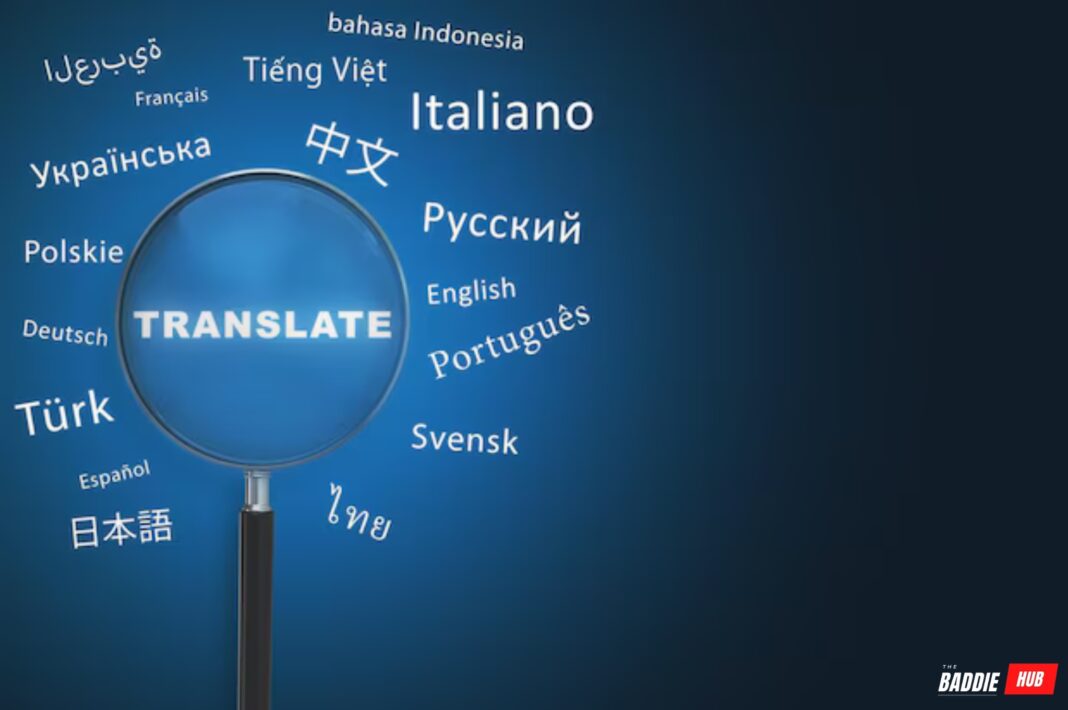In languages such as Bulgarian, Russian, Serbian, and Ukrainian, the word “преводч” is derived from the root word translation (in Bulgarian is part of “преводчик” meaning a translator). It encompasses both human translators and software programmes which assist in the translation process. This paper examines the history, functions as well as the benefits and challenges of online translation tools and highlights how technology transforms “преводч” into a global bridge builder.
🌐 What does “преводч” mean?
- “преводч” roots russian for “ переводчик”, a term used for a translator.
- It captures both human translators and machine-based translation tools.
- Above all, it underscores the fact that translation has always been a means of achieving understanding between cultures.
In the contemporary context, “преводч” refers to the products and services which provide digital solutions to this concept.
💻 The rise of online translation tools
The first attempts of online translation in the 1950s with a rule-based model, there have been many periods of development.
- Rule based MT – early 2000: focused on applying a set of defined grammar based instructions.
- Statistical machine translation (SMT): Applied machine learning techniques based on bilingual text corpora.
- Neural Machine Translation (NMT): Modern systems like google translate and DeepL apply deep learning to comprehend context.
These technological advances with the development of “преводч” has mostly benefitted everyday people with no professional training and thus cannot be enjoyed by linguists.
🔍 Online “Преводч” Platforms That People Use The Most
Modern tools bringing the Slavic translation concept into existence are:
1. Google Translate
- Provides immediate translation for over 130 languages.
- Voice input, handwriting, and image-based OCR translation are some of the voice features.
- Continuous improvement with neural network algorithms.
2. DeepL Translator
- Offers the best output for European languages.
- Provides contextual translations that are nuanced and are often better than others.
- Available in desktop and web apps which also include document translators.
3. Yandex.Translate
- Leading translation tool in Russia, performs well with Slavic languages.
- Has web, image, and voice translation features.
- Provides dictionaries and gives example sentences to teach grammar.
4. Microsoft Translator
- Part of Office, Teams, and Windows.
- Can participate in live translation for video calls.
- Has translation APIs for other developers.
⚙️ Functionality of the Tools
Преводч Machine translation using neural networks (NMT)
Traditionally, services use deep neural networks along with encoder-decoder design:
- An encoder reads the source text and creates a meaning based representation.
- A decoder translates the phrase step by step into the desired language.
Statistical MT and Phrase Based
Word-for-word translations using probabilities and parallel corpora were common in earlier systems.
Hybrid Systems
Performance is enhanced with modern-day Google Translate, which integrates various techniques including rule-based, statistical, and neural.
✅ Advantages of Online “Преводч” Tools
- Instant Analysis: Capable of translating text, speech, images (OCR), as well as handwriting in real-time.
- Scalability: Applicable from single words to comprehensive documents spanning multiple pages.
- Cost-Effectiveness: Ideal for learners and travellers, available at little to no cost.
- Framework: Provides contextual examples, aids in phonetics, and offers interactive grammar instruction.
⚠️ Boundaries to Consider
- Loss of nuance: Idioms, along with cultural references tend to poorly translate.
- Oversight with accuracy: Cases, gender, and verb tenses may be incorrectly categorised.
- Contextual gaps: Homonyms and ambiguous terms are subject to misrepresentation.
- Sensitive streaks: Transgressions of high secrecy without due privacy measures endanger confidential texts.
👥 Situations Human “Преводч” Should Be Preferred Over
Everyday applications do find Artificial Intelligence of great help however in the under noted cases human expertise holds more weight:
- Creative texts and literature: Includes but is not limited to prose and poetry.
- Sensitive Legal/technical documents: These include contracts and manuals along with other classified documents.
- Promotional content: Text that requires idiomatic local prose.
- Certified/official: Emigration, academic transcripts, and visas.
🧠 Strategies for Optimising Online Translators
- Enhance phonetic aids offered: Helps in grammar and revising set phrases.
- Sustain confidentiality: Skirting highly classified texts is a must.
- Employ developer APIs: For use in multilingual documents or apps automate translation systems.
- Integrate methods at hand: Relying on Google assist for wide translation and DeepL later for better quality.
- Always revise for precision: Check grammar, tone, and accuracy.
❓ Q&A: Addressing Your “Translation” Queries
Q1: Is it possible for online “translation” to substitute human translation?
A: No. Professionals are still needed for formal, creative, legal, or culturally sensitive documents.
Q2: Can I upload records that are sensitive and classified?
A: It is safest not to. Some services may offer privacy compliant alternatives, however, these should always be approached with caution.
Q3: Which system performs best on Slavic languages?
A: Yandex is proficient at Russian, DeepL gives nuanced English renditions, and Google Translate has wider coverage.
Q4: Is it possible to improve machine translation by making corrections?
A: Yes. A lot of tools are able to improve because of user corrections and community input.
Q5: Are offline translators not as good as online translators?
A: Offline tools are better, but they depend on pre-downloaded models which can lack a number of advanced neural features.
🔮 The Future of “Translation”
These include:
- Multimodal translation: Supporting text, voice, visuals, and texts within AR and VR ecosystems.
- Domain Specific Models: Dedicated engines for specialized fields like medicine and law or other industries.
- Real-time wearable translation: Instant translation through specialized earbuds or eyewear.
- Intelligent localization: AI self-adjusts tone, idioms, and cultural relevance for sharper precision.
ALSO READ : Delta Flight DL275 Diverted LAX – Full Report
✍️ Final Thoughts
Преводч The term translation—traditionally associated with human translators—is now being simplified through the use of AI technologies that translate in real time over the internet. Even though they cannot take the place of trained translators, these resources are invaluable during travel, for personal use, and even for self-study.
It is necessary to respect the cultural value of language and remember that translation functions best only when its user understands both its advantages and limitations.
In today’s globalized society, we are all connected – from students and business people to travellers and language enthusiasts. The increasing availability of communication technology means it is easier than ever to appreciate the amazing blend of human intellect with automation.



